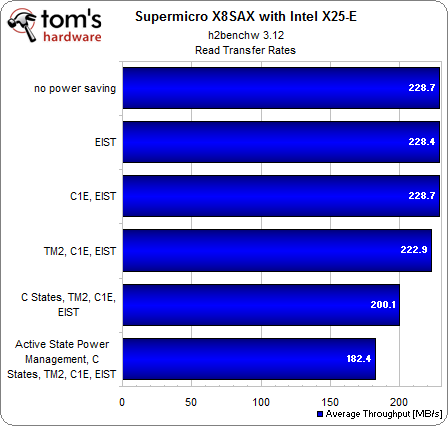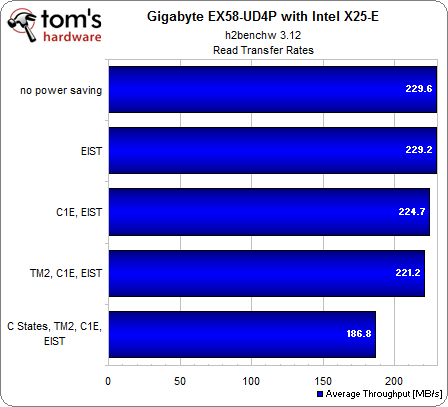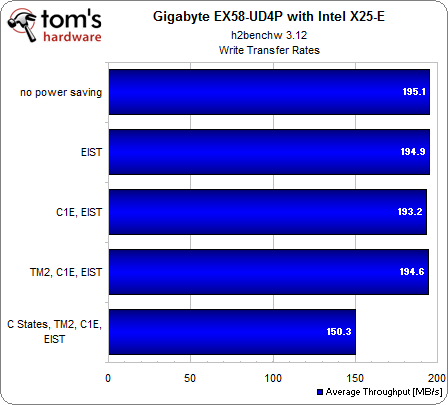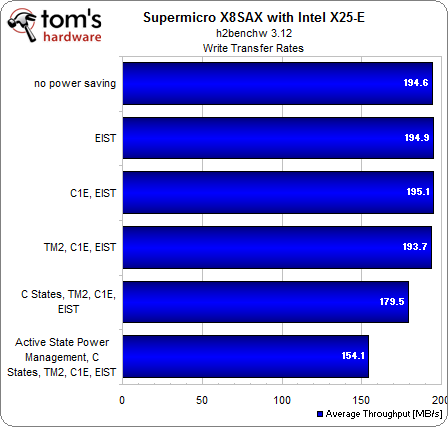Does Power-Saving Technology Kill SSD Performance?
Results: Read/Write Throughput
Without power saving features, the Intel X25-E flash SSD reaches almost 230 MB/s maximum throughput on the Gigabyte EX58-UD4P with ICH10R. Switching on Enhanced SpeedStep technology and C1E (enhanced halt state) does not make much of a difference here, which is also the case for Thermal Monitor 2. However, enabling all further C states—which allow the processor to switch off functional units—seems to add sufficient latency to impact the read throughput, limiting it to 186 MB/s.
The impact on write performance is similar on the Gigabyte board: once the additional C states are switched on in the BIOS, write performance decreases by 23%.
Let’s look at the results on our Supermicro board, which we will soon start using for future storage reviews. It reaches similar maximum read throughput (228.7 MB/s), but even less than the Gigabyte board once all power saving features are enabled (182.4 MB/s). Note that “Active State Power Management” is a power saving feature that affects PCI Express cycles.
The same thing was observed for write throughput.
Get Tom's Hardware's best news and in-depth reviews, straight to your inbox.
Current page: Results: Read/Write Throughput
Prev Page Testing Details And Test Platforms Next Page Results: Read/Write Transfer Diagrams


